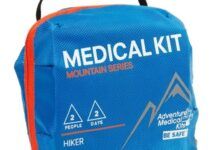The cockpit of Tosca, the 32-foot Atkin ketch that my wife and I cruised on for 11 years, was dominated by a trapezoidal chasm in the flush teak deck, euphemistically referred to as a cockpit well.
A spruce mizzen mast rose in front of the well, directly in the helmsmans line of sight. Not only did this arrangement make the helmsman cross-eyed, it divided the cockpit into two useless spaces, each with its own peculiar hazard. Forward, between the mizzen mast and companionway, the mainsheet cast around like a python looking for something to strangle; aft of the mizzen mast yawned the 26-inch deep cockpit well, our own private Pit of Carkoon, waiting to devour the midnight watch.
If the hapless helmsperson tried to perch beside the well, he would have to dodge the Aries windvanes steering lines, which stretched across the cockpit like a spider web. The watch would find no angled backrest to lean against. There were only the bulwarks and caprail, a plank of yellow pine that sharply met the vertebrae in the lower back with bone-crunching precision. It did not matter how many cushions we wedged behind our backs, comfort was out of the question.
Lying prone was also impossible. Two 12-inch bronze cleats, rising like the horns of an Andalusian bull, dominated the aft quarter, foiling any attempts to lie fore-and-aft.
Except at anchor, when rum-soaked guests occasionally overstayed their visit and curled up among these obstacles, no one ever fell asleep in Toscas cockpit. At sea, between the octopus arms of the mainsheet, the mace-like tiller, and the sharp caprail, the chance of a watchstander dozing off was as distant as the blanket of stars overhead.
I didnt realize until recently the blessings of this painful arrangement. (Funny, how the faults in our former boats so easily fade over the years.) Looking back, I think it quite likely that our torture-chamber cockpit was one of the many matters of chance that conspired to keep us alive.
With the constant shifting to relieve my back, legs, or weary arms, my poor body had no chance of getting any rest. And that was a good thing.
Later this month, we expect US Sailing to release its report on the sailboat Aegean, a 37-foot Hunter that plowed into Mexicos North Coronado Island last April, killing all four crew. While we may never know for sure what caused the accident, it is possible the watchkeeper(s) may have dozed off.
Although I know PS readers are well familiar with Rule 5 of the International COLREGs, it is worth repeating it again here, if only to remind us of the great responsibility of keeping a proper watch: Every vessel shall at all times maintain a proper look-out by sight and hearing as well as by all available means appropriate in the prevailing circumstances and conditions so as to make a full appraisal of the situation and of the risk of collision.
I am particularly fond of the bit about by sight and hearing. As earbuds, iPads, and chartplotters that double as entertainment centers creep into the cockpit, it is easy to forget the essential role that our senses play in keeping watch. The renowned French sailor Bernard Moitissier regarded the ears as the most important sense for the sailor, keenly tuned to the slat of a sail, odd creak in the hull, or strange sloshing sound in the bilge.
Portable electronic entertainment devices are an extremely popular way to while away the hours on buses, trains, and planes, but they don’t belong on watch. At midnight, on a moonless night not far from land, todays entertainment center/navigational devices-whether built-in or pocket-sized-can present the same risks as a short nap in a dry, comfortable cockpit. Better to endure a little tedium and discomfort than awake to the sound of crashing surf.




































